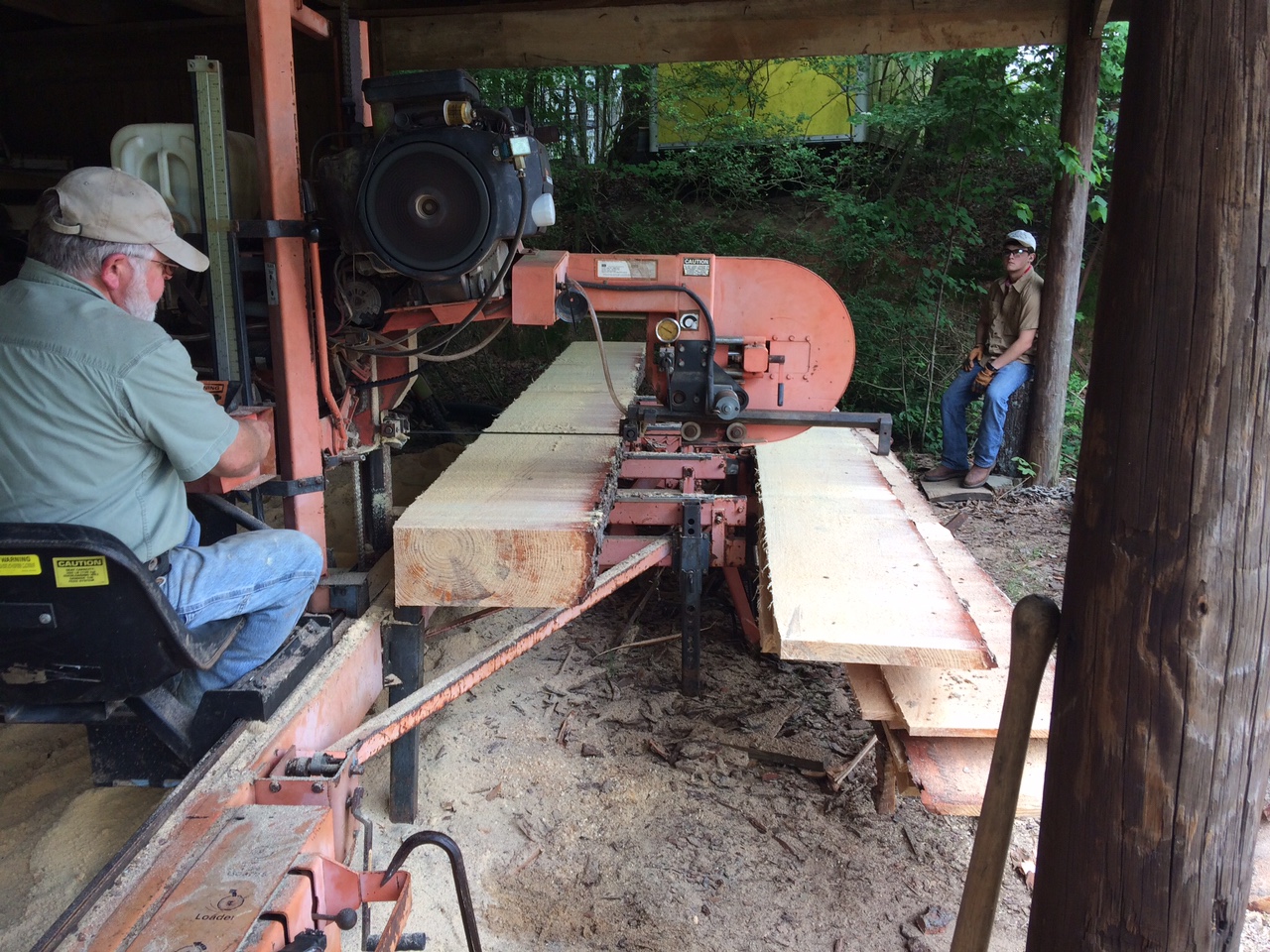Hoodiegadoo
ArboristSite Member
I believe it's quarters of inches. 8/4 = 2"
Yes referring to the thickness of the boards.

I believe it's quarters of inches. 8/4 = 2"
Thanks.I believe it's quarters of inches. 8/4 = 2"
All good info. Thanks.Now that more is added get the guy mentioned and watch. Have lots of long saw horses ready to put non edged pieces on. Have disposal of scrap thought out.
Board and batten is most always 1", from my observation. I do not choose that type of siding.
If you want wide, slice off two sides 180 degrees apart as opposed to aiming for a square can't. When down to 6" or so cut up the other way.
A band sawmill is kind of inefficient in dealing with stuff that has bark on two sides, even more so if you want to maximize board size by doing the edging one piece at a time. Perhaps from the production quoted to achieve the 4 hour estimate the intent is for you to edge with a table saw or something of that nature. An edger in addition to the band mill will make things less stressful and more productive per unit time.
I think the quarter scale is for hardwood and 4/4 is an inch and an extra eighth, 8/4 is two inches and an extra eighth. That is pretty much what one gets when going off a magnetic scale that comes with sawmills or can be ordered from their manufacturers. 4/4 is definitely thicker than if I go for 1 1/16.
All good info. Thanks.
I guess I have this analytical mind, but most guys around here want to build you board and batten siding on just about everything.
It's kind of a copy-what-the-last-guy-did mentality.
Although it looks ok to me on small outbuildings, I'm not convinced I like the aesthetics of it on large surfaced structures like a house or garage.
I prefer the look of horizontal siding for these.
But I have this big White Pine to be felled and I need to plan to use it in some way so I thought why not use it for siding for a shed and a long lean-to woodshed.
We are also building a two-car, lean-to styled carport so I may be able to close in the sides partially and maybe use it for making some rolling barn doors for it too. All of which I've never built before...lol.

144 cubic inches before being cut out of the log and surfaced = s2s planed two sides, s4s planed two sides and edged. That is how 3/4" x 11 1/2" x a foot is called a board foot of lumber at the hardware storeWhat’s a “board” for this purpose ?
Sent from my iPhone using Tapatalk
I guess thickness and board ft per hour is going to depend on what shape you want to mill and the thickness of that shape.
So if I wanted to mill a pine tree into boards for siding, what thickness should I most often cut to?
The milled lumber will be used as siding for some outdoor structures such as wood shed and storage shed.
My miller says about 1.5 inches (or 6/4) thick.
He says 6" board too but I'd like to board and batten the sheds as wide as possible.
Any suggestions from some who've done this and why?



Yes you need to treat White Pine to prolong is lifespan outdoors, but like all pines, it has some natural protection from it's pitch. I will stain any projects I build with it.I’m Not familiar with white pine, but yellow pine is great for roof lath, interior wall coverings, flooring, etc.
I would think if you use it for exterior siding you will need to coat or treat it.
Please take pictures of the process.
My father on the LT-40 hydro sawing yellow pine that I felled.

Yes you need to treat White Pine to prolong is lifespan outdoors, but like all pines, it has some natural protection from it's pitch. I will stain any projects I build with it.
I've got some Yellow Pine 2" x 10' boards from an an old waterbed and they are heavy a hell.
White Pine is a lot less dense, more like Spruce or Fir.
Great pic of milling. Why was the live edge left on one side there? Just wondering.
Enter your email address to join: